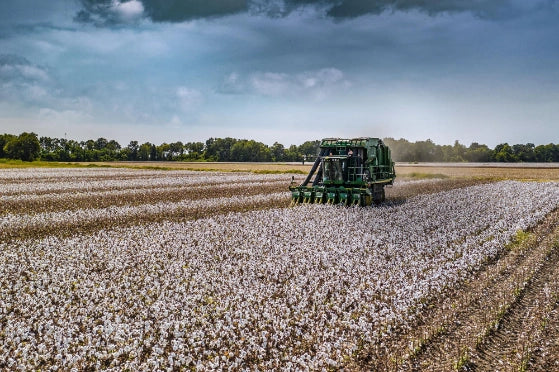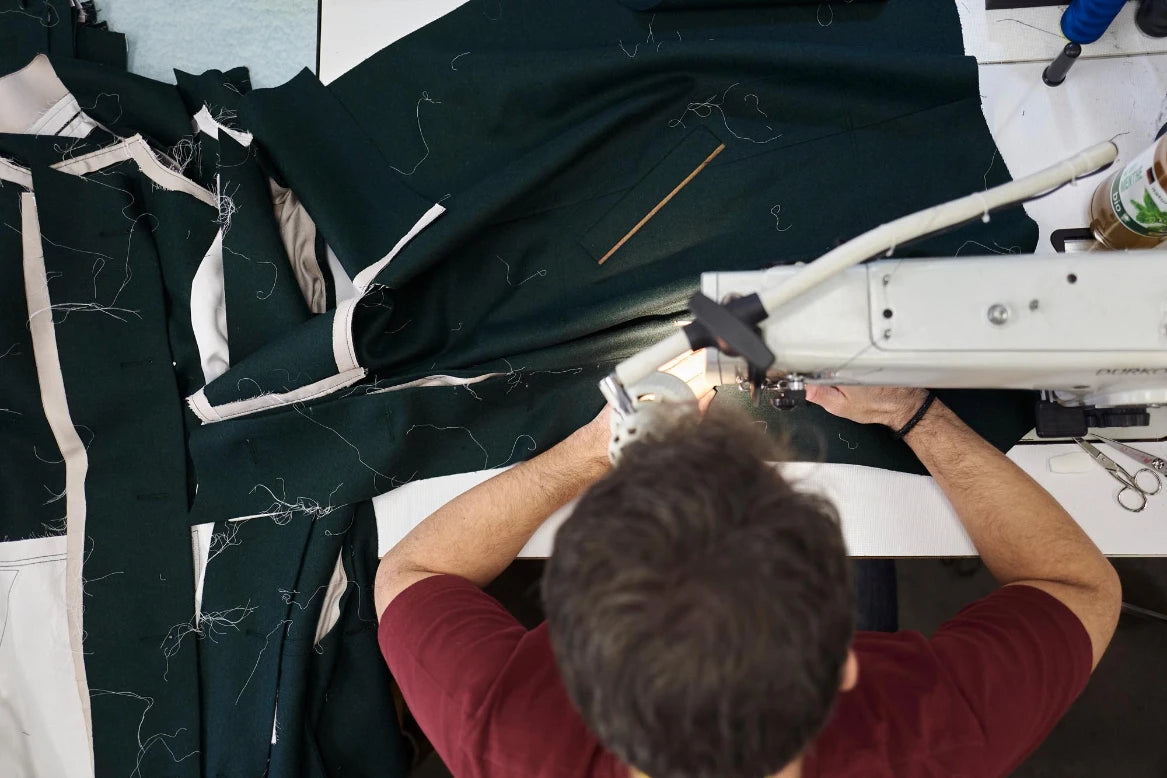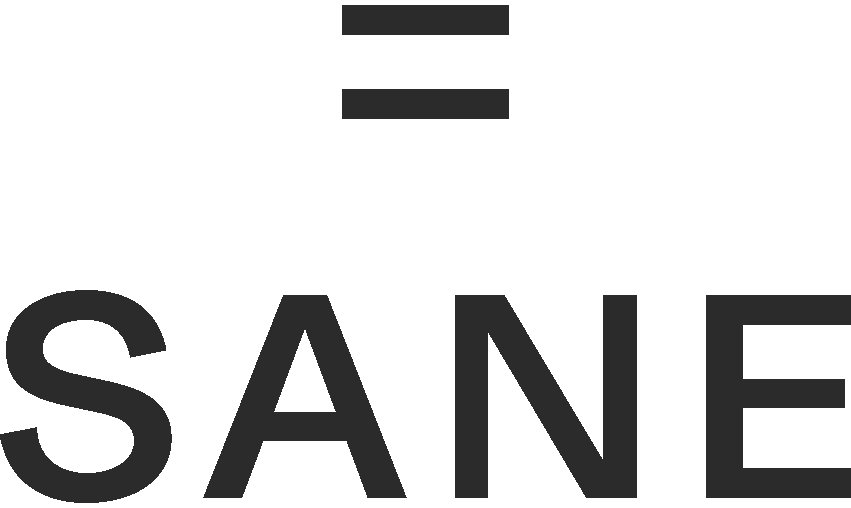
Sustainable cashmere
Cashmere is a luxurious and highly sought-after fiber, immensely valued for its softness and warmth. It is derived from the undercoat of cashmere goats found primarily in Mongolia, China, Iran, Afghanistan and other parts of Central Asia. The fiber is collected in the spring when the goats shed their undercoat naturally. Each goat produces just 100-200 grams of cashmere per year, making it a rare and precious material.
Despite its premium quality, cashmere production has some sustainability issues. One of the main problems is overgrazing, which occurs when too many goats are kept on too little land. This leads to soil erosion, desertification and loss of biodiversity. Overgrazing also contributes to climate change by releasing carbon dioxide and methane, two powerful greenhouse gases. In addition, cashmere processing involves chemical treatments and large amounts of water, which can pollute the environment and deplete natural resources.
History of Kashmir
Nowadays, cashmere garments are no longer a great luxury, but affordable for every budget - and this is becoming a big problem. That was not always so:- 1810: Napoleon Bonaparte gave his wife 17 handkerchiefs made of the finest cashmere as a wedding present. A tradition that seems irrelevant, but is central to textile history. Because it illustrates the enormous importance of the material at that time. Depending on the quality, a cashmere cloth could have the value of a small car today and was therefore an absolute status symbol for elite circles.
- From around 1800: The accessory draped over the shoulders became an indispensable part of the wardrobe of wealthy ladies of the Empire and Biedermeier era.
- From the 1920s: Only with the knitting revolution did cashmere clothing enter the mainstream and become a must-have in every wardrobe.
- Today: Factory farming and industrialization have made cashmere clothing cheaper and easier to produce. The former luxury fiber thus blossomed into a mass product.

How is cashmere made?
Anyone who has heard how cashmere is made will understand its value. Because the fibers are obtained from the downy hair of cashmere goats, which develops their precious fur as protection against the cold in the autumn and winter months. It can only be brushed out by hand once a year in spring . Only the thinnest and longest hair results in high-quality fabrics.The undercoat of 3 to 4 goats is needed to craft 1 sweater. For comparison, shearing a single sheep yields enough wool for 3 to 4 sweaters.
In addition, cashmere goats cannot be bred everywhere: the species is only viable in the high mountains of India, China, Mongolia and Iran .

From luxury to mass-produced goods
That something so rare inspires a sense of luxury and desire hasn't changed over the past few centuries. On the contrary, because there is now hardly a fashion label or discounter that does not have the material in its range. As a result, cashmere is subject to large price ranges like hardly any other material - from CHF 2,000 designer pullovers to bargain prices of CHF 70, everything is included.
With cashmere, it's like it always is with cheap, mass-produced goods: someone is paying the price for being able to offer it here at ridiculous prices. Both humans, animals and the environment:
-
treatment with chemicals
With cheap cashmere, for example, it is not uncommon to treat the coarser outer hair of the cashmere goat with environmentally harmful softeners. -
Terrifying circumstances
Where there is more demand, there must also be faster, cheaper production and more herds of goats. According to estimates by the animal protection organization PETA , around 140 million goats are kept in Mongolia and China, together they are responsible for 90% of global cashmere production. Unfortunately, animal welfare and sustainable environmental standards often fall by the wayside with such «mass production». The keeping of the goats was and probably still is sometimes brutal: For example, many producers are accused of ripping out the fur instead of brushing it out. -
Long transport routes
There are no cashmere goats in our latitudes. This results in long transport routes that cannot be neglected in the ecological balance. -
Overgrazing leads to devastation
The rapid increase in cashmere production also brings with it environmental problems: a goat eats up to 10% of its weight in herbs and grasses every day and tears the plant and roots out of the ground when grazing. In some areas this is causing devastation of former pasture land. -
Intransparent supply chains
The cashmere hair passes countless intermediaries. It is not always easy for consumers and even for companies to understand where the textile fibers come from and whether farms comply with prescribed animal welfare and environmental standards. In order to prove sustainable and cruelty-free production, more and more certificates are used. However, their validity and credibility in today's jungle of certificates poses an additional challenge.
There is no such thing as cheap cashmere and this noble fiber has a deservedly high price for good reason.
Cashmere is a luxury and the natural raw material should be allowed to keep this status. We at Muntagnard are therefore all the more proud that we can now offer the luxury fiber with an innovative recycling solution with a clear conscience .
Recycling as a sustainable solution
As is so often the case, the most sustainable alternative is to use what is already there. We at Muntagnard therefore rely on recycled cashmere. Using recycled cashmere has several environmental benefits. First, demand for new cashmere is falling, which can help ease pressure on grazing land and preserve natural habitats. Second, it reduces the amount of waste that would otherwise end up in landfills or incinerators. Thirdly, energy and water are saved because no new cashmere has to be processed, dyed and finished. Finally, greenhouse gas emissions are reduced as there is less raising of new goats and less transport of their fiber around the world.Our partner from Italy has specialized in collecting cashmere and wool waste from factories, shredding it and producing high-quality recycled yarns from it.“With recycled cashmere, strands of regenerated cashmere are spun into new yarn. This results in a substantial reduction in environmental pollution and prevents unnecessary violations of animal welfare compared to new products. In addition, water consumption and the use of chemicals are reduced to a minimum, as the production process is purely mechanical.» explains Dario, Head of Brand at Muntagnard.
Since recycled cashmere fibers are shorter than new ones, some suppliers usually mix in up to 50% new cashmere fibres. At Muntagnard we mix the recycled cashmere with 3% recycled merino wool to give the yarn extra strength and durability.
In summary, using recycled cashmere is a smart and sustainable choice for quality clothing. It offers the comfort benefits of pure cashmere without the environmental and social costs associated with its manufacture.











